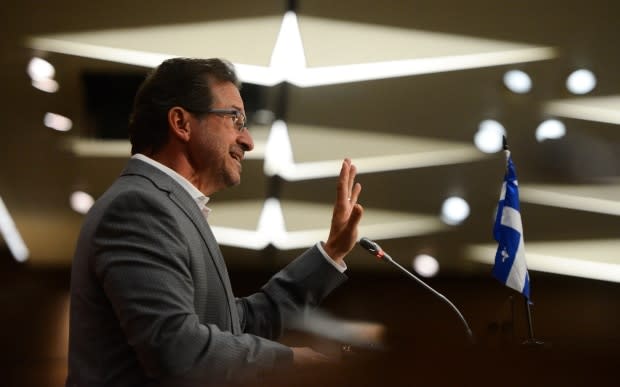Compared to other public supports for political parties, the wage subsidy is a drop in the bucket

Pandemic or no pandemic, political parties receive taxpayer subsidies worth tens of millions of dollars every year — a sum that will rise in 2020 when the four national parties receive the emergency wage subsidy to make up for a shortfall in donations.
The COVID-19 outbreak has had a significant impact on parties' ability to raise money — which explains why the Liberals, Conservatives, New Democrats and Greens have all applied for the federal government's wage subsidy program. The program pays out up to 75 per cent of an employee's pre-pandemic salary.
The parties collectively employ 200 people, so that subsidy will cost the treasury about $670,000 per month.
There's no doubt that parties are hard up for cash, as are many businesses and organizations in Canada. An analysis of fundraising in March and how it compared to previous years suggests the Liberals, Conservatives and NDP might have missed out on as much as $2 million in contributions in that month alone.
Those parties applying for or already receiving the wage subsidy were denounced today by Yves-François Blanchet, the leader of the Bloc Québécois. The Bloc has not applied for the subsidy.
"Programs that were created to avoid the bankruptcy of businesses and individuals serve today to finance the two richest parties in Canada," he said.
"It's deeply unacceptable. The Liberals don't need it. The Conservatives don't need it."

Prime Minister Justin Trudeau was asked repeatedly on Monday about the Liberals receiving the subsidy. He said only that the subsidy is an important program meant to shield businesses and non-profits from being forced to lay off employees.
The decision also is causing some consternation among Conservative leadership candidates.
Ontario MP Erin O'Toole was the first to voice his opposition to his party's decision to take the subsidy, pledging that if he is elected leader he will pay that money back over time.
Watch: Trudeau questioned on why most political parties are receiving COVID relief funds:
"Canadians have sacrificed enough," O'Toole said in an email to supporters. (He also pointed out that if an election were called, he would prioritize defeating the Liberals over paying back the subsidy.)
Toronto candidate Leslyn Lewis released a statement expressing her "disappointment" with the party's decision.
Former cabinet minister Peter MacKay also said that he opposed the party taking the subsidy, arguing that "our party ended direct taxpayer subsidization of political parties."
Parties receive millions in subsidies already
From 2004 to 2015, political parties received a direct subsidy for every vote they received in the most recent election. That subsidy was phased out by the Conservatives under Stephen Harper.
But indirect subsidization of political parties continues. The most significant is the tax credit donors receive for their contributions — 75 per cent of the first $400, 50 per cent for the next tranche up to $750, and 33.5 per cent for the remainder, up to $1,625.
According to the Department of Finance, this credit has cost $145 million since 2016, or roughly $29 million every year.
But that isn't even the only source of public funding for parties. They also receive lucrative reimbursements for their election expenses. These reimbursements are worth 50 per cent of eligible expenses for national parties that receive at least two per cent of the vote, and 60 per cent for individual candidates who obtain at least 10 per cent of the vote in their constituency.
The reimbursement to parties for the 2015 federal election (the last for which data is available) totalled $60.7 million, while another $42.7 million was paid out to individual candidates.

This election expense reimbursement adds another level of subsidy to the contribution tax credit.
A $400 donation will net the contributor $300 in tax credits. If the party then spends that money during an election campaign, it will receive another $200 in reimbursements — that $400 donation has been turned into a $500 subsidy. And if the party spends their reimbursement on another election, it can receive another $100 ... and so on and so on.
In the end, the wage subsidy will be far less costly than the other subsidies from which parties already benefit.
Certainly, political parties serve an important function in democracy — and they are employers, like any other organization. Like many non-profits, they can do a lot of good work.
Nevertheless, the propriety of parties receiving subsidies from programs that they themselves have designed or supported in Parliament can be debated.
But the wage subsidy is just one of many ways in which parties have awarded themselves sources of taxpayer funding. Whether those sources are direct or indirect, the money all comes from the same place.


